4 reasons your infielders are struggling
Podcast: Play in new window | Download | Embed
Subscribe: RSS
This is combination podcast/blog post, so you get choose your medium for consumption! As you will see in this episode/post, we are all about choices!!!
We've seen it in every aspect of the game, your players dominate practice!
They are great mechanically. They can field forehands, backhands, make routine plays, make double plays, field slow rollers, and their arm looks great.
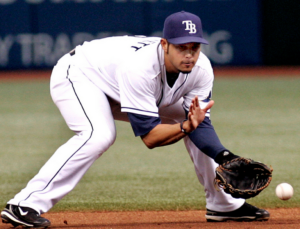 Then game time comes. Their "mechanics" still look good, but they make errors. Lots of errors. They seem unsure and hesitant. They don't know where the ball needs to go. They seem surprised the ball is hit to them.
Then game time comes. Their "mechanics" still look good, but they make errors. Lots of errors. They seem unsure and hesitant. They don't know where the ball needs to go. They seem surprised the ball is hit to them.
Then they look like they don't want the ball hit to them.
What's going on?
Let's look at the top 4 reasons infielders don't translate practice performance into games.
1.) A lack of understanding of what a "good fielder" at your level is - Here's the bottom line, we aren't dealing with professional infielders. I went back and looked at how our shortstops have fielded since 2011.
In that group, we had a Division 3 player, two Division 1 players (including one playing for a top 10 team), one professional player, and an NCAA Gold Glove winner for the best shortstop in the country his senior year in college. Their fielding percentages at the high school level were ALL between .890 and .931.
Again, these are not professionals. We play on some questionable fields, that give them some questionable hops. That means good high school shortstop will probably make 1-2 errors every 20 chances or so. Making errors is not unusual, and should not be treated as the plague.
It is reasonable to believe that fielding percentages will be even lower at the younger levels, so don't think your infielders are the only ones making errors. They aren't.
We just need to know how to minimize them.
Check out our Developing Athletic, Consistent, Extraordinary (A.C.E.) Infielders online course and start developing game-ready infielders.
2.) An overemphasis on mechanics - When infielders make errors, many of them, and their coaches, want to immediately turn to mechanics. If they aren't having success there must be something mechanically wrong.
The reality is, the mechanics of fielding a ground ball are not too difficult. Once a player's mechanics are reasonably good, they probably aren't making errors because of mechanics.
Our baseball society is turing into a "fix me coach" society. When a player doesn't have success, they turn to a coach to tell them what they are doing wrong. I challenge you to not always look for a mechanical fix to every problem.
3.) They are picking the wrong hops - Bad infielders "get" hops. Good infielders "pick" their hops. Imagine how easy fielding would be if your infielders always got that long hop or "Sunday hop."
Pretty easy right? That .920 fielding % would look at more like .950 wouldn't it?
Good infielders get more of those long hops and fewer of the dreaded "up hops" by moving their feet in good tempo and rhythm and learning the path of the ball on the ground.
It is easy for a coach to tell an infielder to charge the ball to get better hops. This is what the player wants to hear, a quick easy fix that will make everything better. What they don't want to hear is that THEY need to learn when to charge the ball to get the correct hop.
If you're looking for a great fielding game to help develop this skill check out our "Picking your hop" game.
3.) They don't see game-like reps in practice - This one is on us! How often do your infielders take ground balls in practice with a runner sprinting down the line?
This occurred to me as our future D1 short stop was fielding about .880 half way through his senior year. Everything was good during practice, then nothing was good during the game.
It was my fault. The reps he was getting in practice were very low pressure and looked nothing like what he was seeing in the game. In practice, there was no runner, no time to beat, and no "consequence" for an error. NOTE: Please to not read "consequence" to mean running or punishment for mistakes... we don't do that.
Adding a runner in practice naturally makes each ground ball more competitive, more realistic, and adds the variable of time to their repetition. Infielders need to develop an internal clock so they learn how quickly they need to get rid of the ball.
4.) Very regimented infield practice - To the outsider, an infield practice that works its way around the infield from left to right where the fielders get three balls right at them, one to their left, one to their right, and a slow roller looks very slick and organized. All of the players know exactly where to go, exactly what's coming, and look great.
But don't be fooled by this "organization." What's really happening here is that we are taking the decision making out of the infielder's hands. They know what is coming next, and that doesn't mimic game play in the least.
When was the last time a hitter told your third baseman he was about to hit a ball to his left? When was the last time a hitter told your second baseman he was about to hit him a slow roller?
Even on a routine ground ball in a game, infielders have to make decisions. This type of regimented practice is not great for game play development because the player doesn't have to think and react, they know what's coming and can accomplish the goal without thinking.
This type of practice (blocked practice) certainly has a place in a baseball practice. When a player is learning or reinforcing a skill, blocked practice is the way to go. But as their skills develop, start adding more random practice into your infield routines.
Try this simple drill: Set up a runner and out situation (you could use actual runners or a clock to mimic the runners) and hit the ball randomly on the infield and make the infielders react. They are still getting lots of reps, but now they have to think about the situation AND how they should field the ball before actually doing it.
Again, keep in mind that we are dealing with less than perfect athletes, so expecting perfection is only going to lead to failure, but there are many things we can do as coaches in improve our infielder's ability to translate what they learn in practice to the game.
If you liked this post, you'll LOVE our Developing A.C.E. (Athletic, Consistent, Extraordinary) Infielders online course.
In this course will learn:
- How to stop creating still robotic infielders, and how to take advantage of their natural athleticism.
- How to develop practices that focus on skill and mechanical improvement and are competitive and game-like.
- How to maximize your warm-up time and start creating A.C.E. Infielders from the moment your practice/pre-game starts
- Lead up drills to develop good hands and footwork
- Tactical games to develop competitiveness and game-ready infielders
- How to develop tempo, rhythm, and timing in your infielders
- How to dramatically improve the % of double plays you turn
- Full infield drills to maximize your infielders repetitions during practice
- Three BONUSES that are too good to pass up!
Check it out here ~~~> www.cornerstonecoachingacademy.com/ace-infielders
More from my site
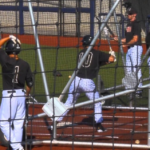 CCA Podcast 042: In season hitting training
CCA Podcast 042: In season hitting training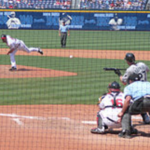 CCA Podcast 070: 10 tips for playing great team defense part 1
CCA Podcast 070: 10 tips for playing great team defense part 1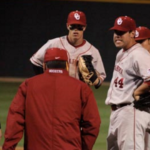 CCA Podcast 047 : Signs your starting pitcher needs to be taken out
CCA Podcast 047 : Signs your starting pitcher needs to be taken out Mini – An underutilized pitch in the amateur game
Mini – An underutilized pitch in the amateur game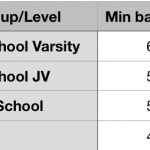 Three metrics we measured with Blast Motion and what we learned from it
Three metrics we measured with Blast Motion and what we learned from it CCA Podcast 094: 7 common characteristics of great programs
CCA Podcast 094: 7 common characteristics of great programs
 Posted by Kyle Nelson
Posted by Kyle Nelson- Posted in Practice Organization
 Jul, 25, 2015
Jul, 25, 2015 No Comments.
No Comments.
Elite members login here
Check out what’s New/Hot!
Recognizing, Diagnosing, and Fixing Common Hitting Flaws eCourse The 3 metrics we tested on Blast motion sensors this year Sneak Peek Inside an Elite Q and A The batting practice continuum Elite Member’s area table of contents 50+ “Chaos” hitting drills
5 sample Chaos hitting drills FREE
Mental Skills and Culture Building The hitting pyramid Welcome Elite Member, Trey! Ideas for a pitcher first practice 12 week bat speed improvement plan Make plans this offseason to have your team playing their best baseball at the end of the year” Top 5 hitting drills to translate practice skill to game performanceHow we used Blast Motion sensors with a team in 2019
What to do if your hitters are overmatched Welcome Elite Member, Tommy! Setting your baserunners up for success Welcome Elite Member, Mike! A consulting call with Elite Member Matt FREE Web Clinic: Developing Athletic, Consistent, Extraordinary Infielders
 Coach Kyle Nelson
Coach Kyle Nelson